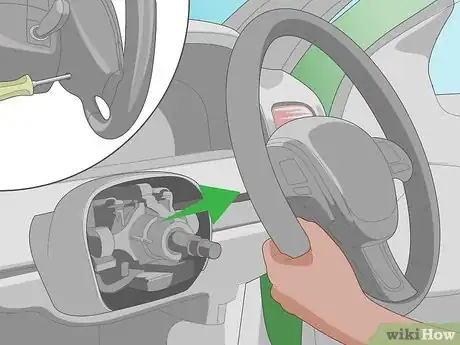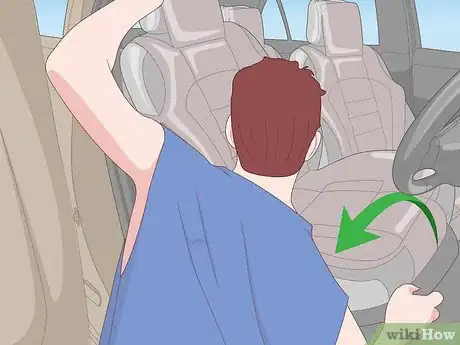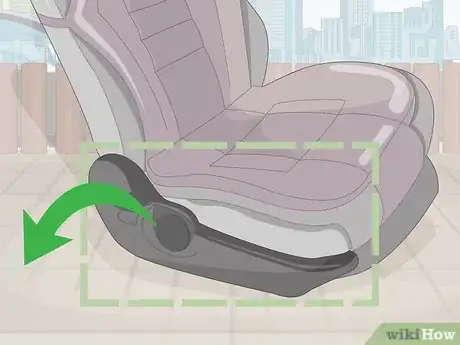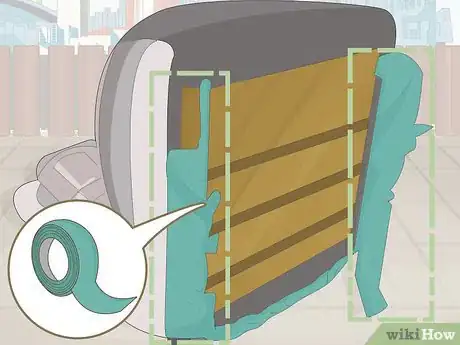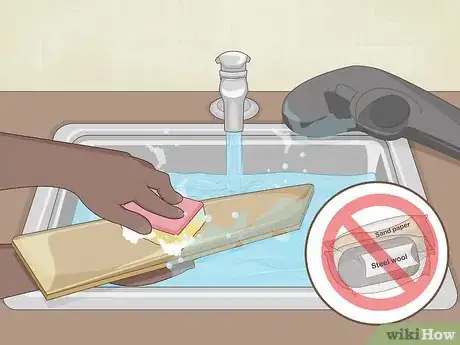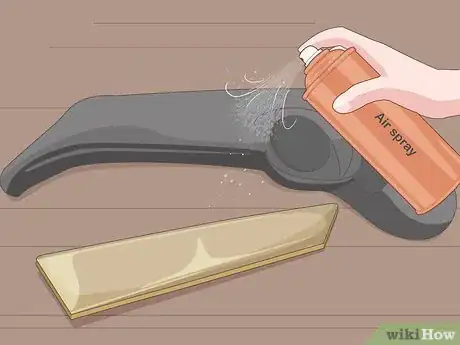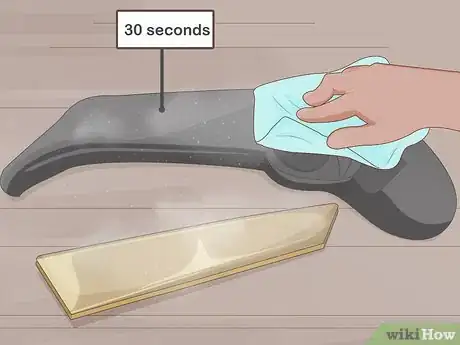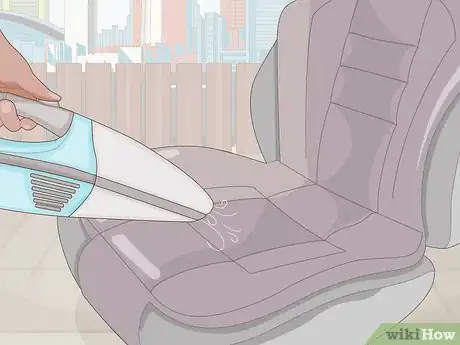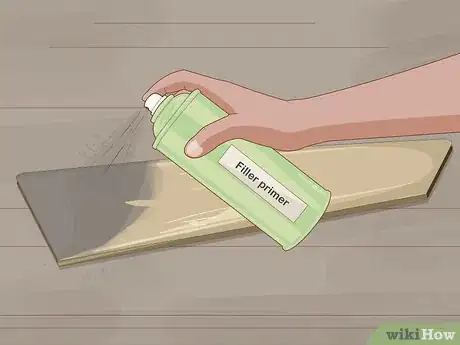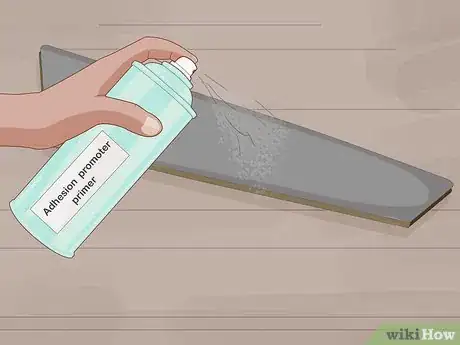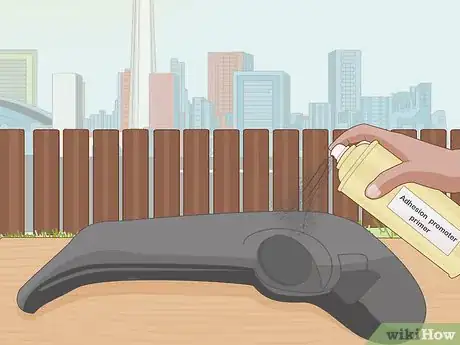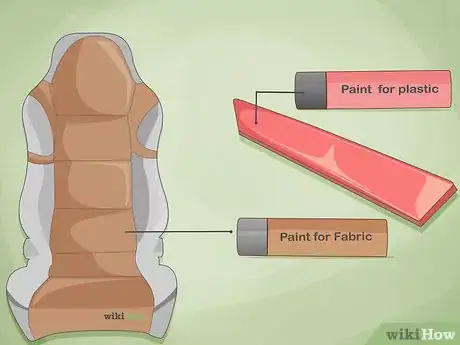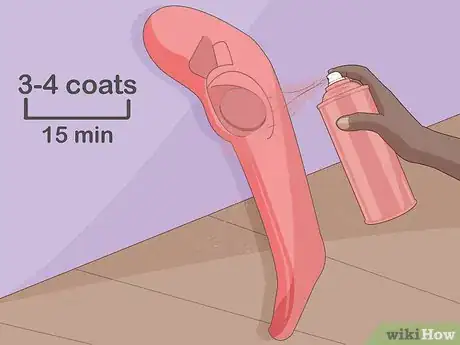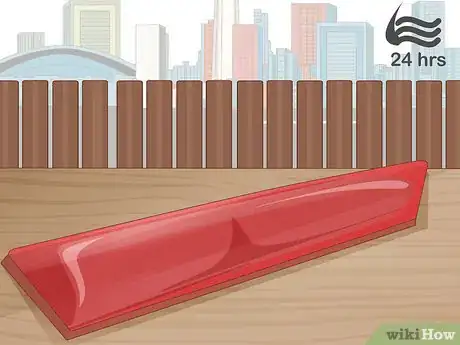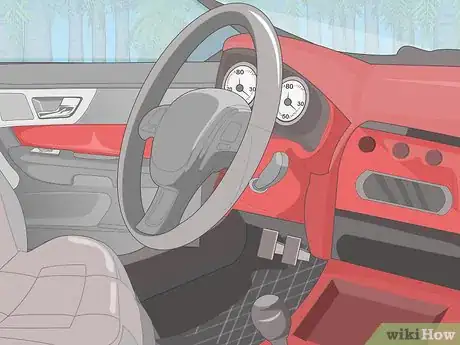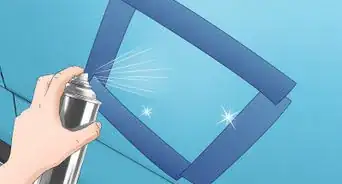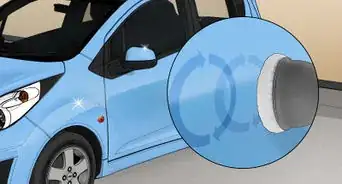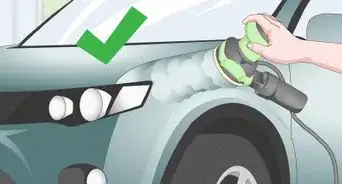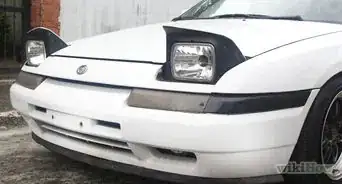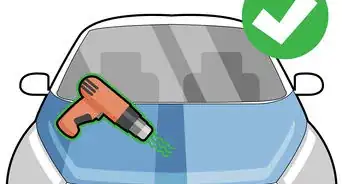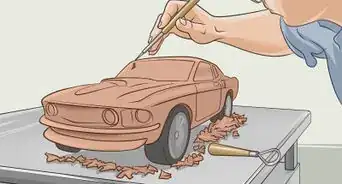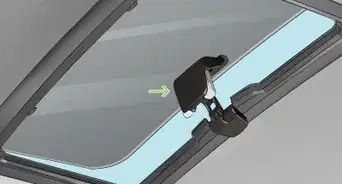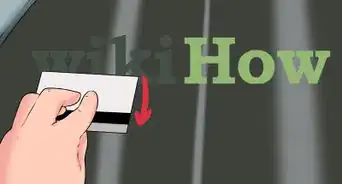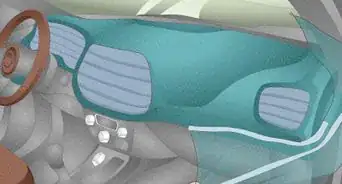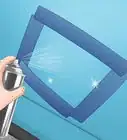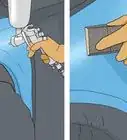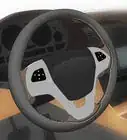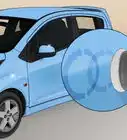This article was co-authored by wikiHow staff writer, Christopher M. Osborne, PhD. Christopher Osborne has been a wikiHow Content Creator since 2015. He is also a historian who holds a PhD from The University of Notre Dame and has taught at universities in and around Pittsburgh, PA. His scholarly publications and presentations focus on his research interests in early American history, but Chris also enjoys the challenges and rewards of writing wikiHow articles on a wide range of subjects.
There are 15 references cited in this article, which can be found at the bottom of the page.
This article has been viewed 104,893 times.
Learn more...
Nearly every plastic and vinyl surface in your car's interior can be revitalized through painting—you can even paint fabric seats! Preparing the materials properly is critical, though, and removing them for painting is always preferable. You also need to choose the right primer and paint for your specific needs and use careful spraying techniques. But, when you're done, your faded car interior will look like new!
Steps
Removing or Masking Components
-
1Read your owner's manual before removing interior panels. Some components will pop right out with minimal effort. Plastic interior trim panels, for instance, are often held in place by small tabs, so a bit of squeezing, pulling, and wiggling will usually work them free. However, to reduce your chance of breaking something, read your owner's manual carefully for instructions on removing interior panels.[1]
- Although removing components to paint them can be time-consuming, it's safer to paint them this way, and they'll look better in the end.
-
2Remove door panels according to your owner's manual. You'll often have to pop off plastic sections near the window, door handle, and/or speakers to reveal the screws holding the panel in place. Once you remove all the mounting screws with a screwdriver, you can pull off the panel and disconnect any wiring for the speaker, windows, etc.[2]
- Each grouping of wires will be connected to the door with a plastic clip that will pop right out when you squeeze and pull on it.
- Removing a door panel usually requires a step-by-step approach, so follow the instructions for your specific vehicle carefully.
Advertisement -
3Exercise extreme caution if you're removing steering wheel components. If you start trying to pull off steering wheel panels without knowing what you're doing, you could easily be injured by an unexpectedly-deployed airbag. Read your owner's manual in great detail before attempting to remove any steering wheel components for painting.[3]
- Generally speaking, you should disconnect your car battery and wait at least 30 minutes before attempting to remove any steering wheel panels. After that, you may need to disconnect the airbag (possibly from the underside of the steering column) and remove the airbag chamber, cover and all, from the steering wheel.
- If you are at all uncertain how to do this, let a professional handle this part of the job. It can cost up to $1000 USD to replace a broken airbag system.
-
4Remove the seats if you're painting them. In many cases, car seats are held in place by 4 bolts total, 1 at each end of the 2 rails the seats slide on. Remove these with a socket wrench, tip the chair back, and squeeze and pull any plastic clips holding wiring (for seat adjusters, etc.) in place. Then remove the seat.[4]
- Painting fabric seats while they're still in the car usually causes a mess and can expose you to higher concentrations of chemical fumes. Take the time to read your manual and remove the seats properly before painting them.[5]
-
5Cover any parts of the seat you don't want to paint. Once the seats are out, remove and/or cover any plastic, metal, or other components you don't want to paint. Use a combination of painter's tape and plastic shopping bags to mask those areas.[6]
-
6Tape or cover sections if you want to paint components in place. If you choose to paint interior components without removing them, be extremely thorough in masking over surfaces that you don't want to be painted—for instance, the gauges, the stereo, the windshield and mirror, and so on. Apply painter's tape to create sharp edge lines between painted and non-painted areas, and tape sheets of plastic (or plastic shopping bags) that have been cut to fit over larger areas that you don't want painted.
- Whenever possible, spray components outside the car, so you aren't dealing with concentrated fumes. No matter if you're spraying inside or outside the car, though, work in a well-ventilated area and wear a mask.
Preparing Surfaces for Painting
-
1Clean plastic and vinyl components with soap, water, and a cleaning pad. Add a squirt of dish soap to a bucket of warm water. Dip an ultra-fine-grit cleaning pad (e.g., a gray Scotch Brite scouring pad) into the water and wash the components thoroughly.[7]
- Don't use steel wool, sandpaper, or heavier-grit cleaning pads, as these will scuff up the plastic or vinyl too much.
- You want to just barely scuff the surface to help the paint adhere, and remove surface dirt and grime.
-
2Use compressed air to dry the plastic or vinyl components. If you have compressed air available in your workshop, or have a spray can of it handy, use it to blow-dry the pieces you've washed. Compressed air will dry the parts quickly and remove any dust created by the cleaning pad.[8]
- If you don't have compressed air, let the parts air dry, or wipe them down with a lint-free cloth. Then wipe over everything with a tack cloth to remove any dust.
-
3Wipe vinyl or plastic parts down with TSP. Trisodium phosphate (TSP) comes in powdered form and must be mixed with water according to the package instructions. It is also a very potent cleaner, so you must wear long clothing, eye protection, a breathing mask, and rubber gloves, and work in a well ventilated area. Mix up only as much as you need and wipe down the parts with a cloth dampened with TSP, then let the parts air dry.[9]
- If you have vinyl components and would prefer not to work with TSP, you can find aerosol vinyl prep cleaner sprays at automotive stores. Just spray on a thin coat, let it set up for about 30 seconds, then wipe it off with a lint-free cloth.[10]
- If you want a TSP alternative for plastic parts, use denatured alcohol. Dampen a clean cloth with the alcohol, wipe down the components thoroughly, and let them air dry.[11]
- No matter which product you use, follow all listed safety precautions and work in a ventilated area.
-
4Vacuum fabric seats before priming and painting them. Use a vacuum with powerful suction and remove every bit of dirt and debris that you can from the fabric. For heavily-soiled seats, you may want to use a steam cleaner, then let them dry and follow up with the vacuum.[12]
- If your fabric has a suede finish with a grain to it, brush the grain in its natural direction after vacuuming it and before painting it.
Priming the Components
-
1Choose a filler primer for plastic components with scratches in them. Filler primers are formulated to smooth out small scratches and cracks in plastic parts. Depending on the product instructions, you may need to apply multiple layers of the primer to achieve the desired effect.[13]
- Filler primers can be found with other spray primers and paints. Look for one specifically formulated for automotive uses, if possible.
- No filler primer can make deep scratches or cracks disappear, but they may become less noticeable.
- Filler primers won't work on flexible materials like vinyl or fabric.
-
2Use an adhesion promoter primer for maximum hold. This can be particularly useful for vinyl components, as it will help the spray paint adhere to the slick, flexible material. Look for it alongside other automotive primer sprays.[14]
- You can use this for plastic parts as well, if you don't need a filler primer.
- Don't use a primer of any type on fabric before painting it.
-
3Work in a well-ventilated area and wear a mask. A sheltered spot with lots of airflow but minimal wind is ideal for spray priming and painting. Try a garage with all the doors and windows open, for instance. And always wear a breathing mask while spray painting to reduce your intake of fumes and particles.
- Also put down drop cloths, pieces of cardboard, or other protection against overspray.
-
4Apply 1-2 thin primer coats with quick bursts of spraying. Follow the instructions on the can. Generally speaking, though, you'll shake the can for 1 minute; hold the can 6–8 inches (15–20 cm) from the object; and spray in bursts over the surface of the object, keeping the can in motion as you spray.[15]
- Don't hold the can in one spot, or you'll end up with splotches or bubbles on the surface.
- Apply 1, 2, or more coats as directed. For multiple coats, wait the recommended time between applications (usually 5-15 minutes).
Painting Interior Parts
-
1Choose the appropriate spray paint for your surface. Plastic parts should be sprayed with a paint labeled for use on plastic. Vinyl or fabric parts should likewise be sprayed with a vinyl or fabric paint, respectively. If possible, choose spray paints designed for use on automotive components.
- Vinyl and fabric spray paints are able to flex along with those materials. A paint designed for plastic will crack and flake off of vinyl or fabric.
-
2Apply thin coats by using a quick, steady spraying motion. Spraying on the paint involves the same process as applying primer. Shake the can as directed (usually for 1 minute), hold it 6–8 inches (15–20 cm) from the object, and apply thin coats with bursts of spray while you move the can over the surface.[16]
- Wait approximately 10-15 minutes between coats—follow the package instructions.
- It may take 3-4 coats, or even more, to adequately cover some components. Applying numerous thin coats produces far superior results to trying to spray on 1 or 2 thick coats.
- No matter how many coats of spray paint you apply to fabric, you may never achieve ideal results that cover every spot on the fabric. This is especially true for suede fabric. Therefore, it's best to temper your expectations somewhat before painting interior fabric, or to let a pro do the job for you.[17]
-
3Spray 1-2 coats of clear coat on plastic or vinyl, if desired. Clear coat will add a little extra shine and protection to your paint job. Apply it in the same way as the paint, but take special care to apply thin, even coats over the surface of the object. Otherwise, you may notice streaks or differences in the level of gloss on the finished product.[18]
- While you might wait 5-15 minutes between coats of primer or paint, it's better to wait the full 15 minutes (or even a little longer) between applications of clear coat.
-
4Don't touch the components for 24 hours. No matter the material, and regardless of whether you applied clear coat or not, it's best to keep your hands off the paint job for at least a day. This will permit the paint to dry fully and remove any tackiness from the surface.[19]
- A good-quality fabric paint should not leave any discoloration on a white cloth pressed to it after 24 hours. If it does, and the fabric is on a seat, you'll have little choice but to either replace the seat or find a seat cover that will prevent stains on your clothing.
-
5Unmask and reinstall the components. After 24 hours, peel off any painter's tape and plastic you used for masking purposes. Then, using your owner's manual as a guide, reinstall any removed components in the reverse order from how you took them out. For instance:
- Lift the seats into place, push in any plastic clips to reconnect any wiring, and reinstall the bolts (there are usually 4) with a socket wrench.
- Reconnect the steering wheel's airbag and any components you removed very carefully according to your owner's manual, or have a professional do it.
- Lift the door panels into place, connect the wiring by pushing the plastic clips in place, reinstall the mounting screws with a screwdriver, and pop in any plastic panels near the windows, handles, etc.
- Pop in any plastic trim pieces held in place by plastic tabs.
References
- ↑ https://youtu.be/gtt_Ucb2vYs?t=20s
- ↑ https://www.2carpros.com/articles/door-panel-removal
- ↑ https://youtu.be/gtt_Ucb2vYs?t=35s
- ↑ http://automotivedetailing.com/assets/articles_htm/removing_seats.htm
- ↑ https://youtu.be/ZlxeUYNrdEg?t=45s
- ↑ https://youtu.be/ZlxeUYNrdEg?t=45s
- ↑ https://youtu.be/OvyiK57uzuo?t=40s
- ↑ https://youtu.be/OvyiK57uzuo?t=1m15s
- ↑ https://youtu.be/yD1QqO5ZfAM?t=2m5s
- ↑ https://youtu.be/OvyiK57uzuo?t=1m35s
- ↑ https://youtu.be/OvyiK57uzuo?t=6m55s
- ↑ https://youtu.be/ZlxeUYNrdEg?t=45s
- ↑ https://youtu.be/gtt_Ucb2vYs?t=5m20s
- ↑ https://youtu.be/yD1QqO5ZfAM?t=3m30s
- ↑ http://www.wildweasel.ca/HowTo/Auto/InteriorPaint.aspx
- ↑ https://youtu.be/OvyiK57uzuo?t=4m20s
- ↑ https://youtu.be/ZlxeUYNrdEg?t=4m30s
- ↑ http://www.wildweasel.ca/HowTo/Auto/InteriorPaint.aspx
- ↑ http://www.wildweasel.ca/HowTo/Auto/InteriorPaint.aspx
About This Article
To paint a car interior, start by removing the parts you’ll be painting according to the owner’s manual. Next, apply 1 to 2 thin coats of primer in short bursts, using filler primer to repair scratches or adhesion promoter primer to help the paint stick. Then, apply 3 to 4 coats of spray paint, using paint that’s labeled for use either on plastic or on fabric and vinyl. Apply 1-2 coats of clear coat on plastic or vinyl parts for an extra shine! Keep reading for tips on how to prep parts of your car’s interior for painting!


